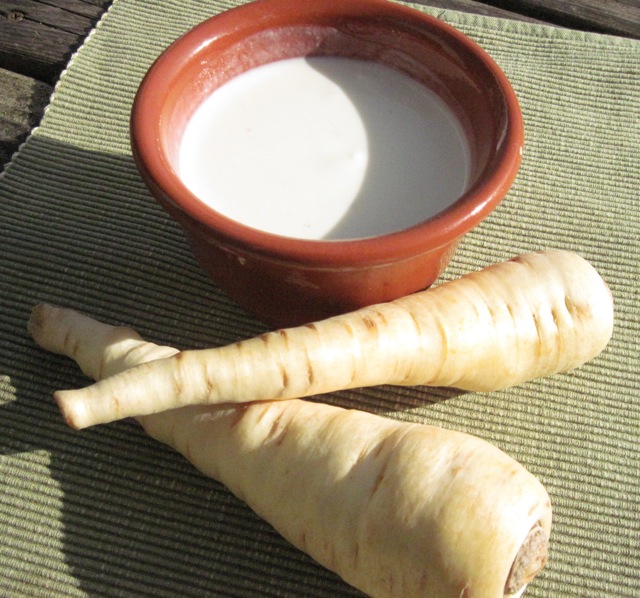
primary-image, l
(post, Linda Ziedrich)

primary-image, l
I first made parsnip soup many years ago, after listening with my then-small eldest child to Peggy Seeger sing, “What Did You Have for Your Supper?” on the record American Folk Songs for Children (see Note). I didn’t read the song’s title in the record notes, though, and I heard the words as “What’ll you have for your supper?” What’ll you have for your supper, Jimmy Randall, my son? What’ll you have for your supper, My own little one? Sweet milk and sweet parsnips; Mother make my bed soon, Because I’m tired at the heart And I want to lie down. With each sweet Peggy’s voice soared to the top of the octave; Jimmy was pleading for sweet white comfort food that Mother and no other could provide. Or so I thought. Little did I know that I was hearing a surviving fragment of “Lord Randall,” an Anglo-Scottish ballad about a man who may actually have lived, in the thirteenth century or thereabouts, until he was poisoned—by his sweetheart at dinner, according to most versions of the song. Typical versions say that she also poisons Randall’s dogs, who “swell up.” Feeling poorly after the meal, Randall goes home to his mother. The story is told through conversation between mother and son as poor Randall heads for his deathbed. Fuller versions don’t mention milk or parsnips; usually he has eaten eels or other fish. And Mother is always less curious about the tainted food than she is about the distribution of Randall’s worldly goods. The parsnip has been popular since Roman times, though it was probably thin and woody and suitable only for flavoring until about the time Lord Randall was getting sick on eels. Then gardeners developed it into a fleshy, aromatic root that at its best cooks up quite tender. The parsnip is still a trial for the gardener; with seeds slower to sprout even than those of most other umbellales, the plant take months to grow to size while the gardener repeatedly weeds around the root. Then it must stay in the ground even longer, well mulched, until it is sweetened by frost. Finally it can be stored in a cellar or left in the ground, depending on your climate, until some cold night in winter or early spring when you’re craving something sweet, starchy, and soothing. The modern English name parsnip may have been influenced by parsley, for a white-rooted cousin, and turnip, for an unrelated and fleshier root vegetable. The parsnip is even more like the carrot than like either of these, but sweeter and starchier, with no bitterness. People who describe the parsnip’s flavor as “nutty” are probably thinking of chestnuts. Parsnips are good roasted, fried, pureed with apples or carrots or potatoes, diced in chicken pot pie, and flavored with curry powder or ginger. But when I heard Peggy’s song I knew just what I wanted to make with parsnips, and it’s what I most like to make with them today: Parsnip Soup Saute some diced onion in butter. Add diced parsnips (don’t bother to peel them first). Add chicken stock, and cook the parsnips in the stock until they are tender. Add milk, cream, or half-and-half. Season with salt, white pepper, and grated nutmeg. Puree the soup in a blender, and reheat it if needed. I don’t believe Jimmy Randall ever got sick on sweet milk and parsnips. It was his mother who fed him the soup, I’m sure, and he woke up the next morning feeling fit and lively. Even his dogs survived. At least that’s how I like to sing the song. NOTE: Rounder Records 8001/8002/8003. Sung and played by Peggy and her brother, Mike Seeger, the 94 songs on this album are from the book American Folk Songs for Children, by their mother, Ruth Crawford Seeger. The book is still in print, and the album is now available on CD.